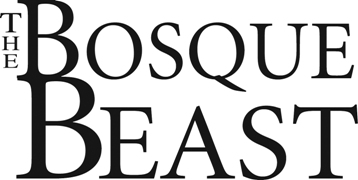Once you can move their feet, practice some obstacles. This is good for trail riding even if you never compete. In the bosque there’s water to cross, there are logs, there are jumps, very tight places, and bridges. This gives purpose to whatever you’re doing in the arena.
So your horse also gets in synch with you, and can guess what you want.
You don’t want them to anticipate; you want them to listen. Most people do too much. This is especially true with obstacles, and what you end up with is a horse going past or stepping out of the obstacle. For example, at first I might have to say, “Move!” (kicks). Next time it’s a smaller movement (leans slightly).
Isn’t it hard to stay aware of the subtle movements you’re making, when you want the horse to understand them all clearly?
You have to be consistent. For example, a lot of times people’s instinct is to protect themselves against the horse going forward. Like on Clear Ditch, when they’re going across water, they instinctively hold their horse back. Instead, what you need to do is keep the horse straight and moving forward.
People also get emotional, and that’s counterproductive. If your horse isn’t doing what you want, it’s probably your fault, or the horse doesn’t know how to do it. You have to be able to take your emotion out of it.
Take trailer loading. If you’re not patient, and get mad, they start acting stubborn because they sense that getting in the trailer would be dangerous for them.
How much time do you spend training?
Elektra is 6, and I’ve been riding her since she was 3, competing for two years. I ride the bosque probably two times a week, and we practice things out on the trail. It’s rare that I would set up all the obstacles in the arena.
What are some of the main issues you see with recreational riders?
A lot of people have a hard time getting their horse to stand still, because they’re all geared up themselves. This is the biggest thing we see: Most people’s horses do more than they want them to do. We try to get them to start by controlling the horse’s feet, getting the horse focused on you. That’s what it’s all about. You want to have some understanding and communication with your horse.
The other big thing is “feel”—how much pressure to apply, and when. Feel and timing, you can’t teach. That comes from experience, study, and lots of practice. All you can teach are the mechanics. And often people get into trouble because they’re trying to learn it all mechanically, and they don’t consider feeling for, or getting in time with, the horse.
Kathryn and Mike Sikorski started riding seriously when they moved to New Mexico in 1996 and acquired seven horses. They have studied extensively with the Parellis, Ray Hunt, Buck Brannaman, and Tom Curtin. Since 2004, Mike Sikorski has operated Horse Helpers and Consultants.
